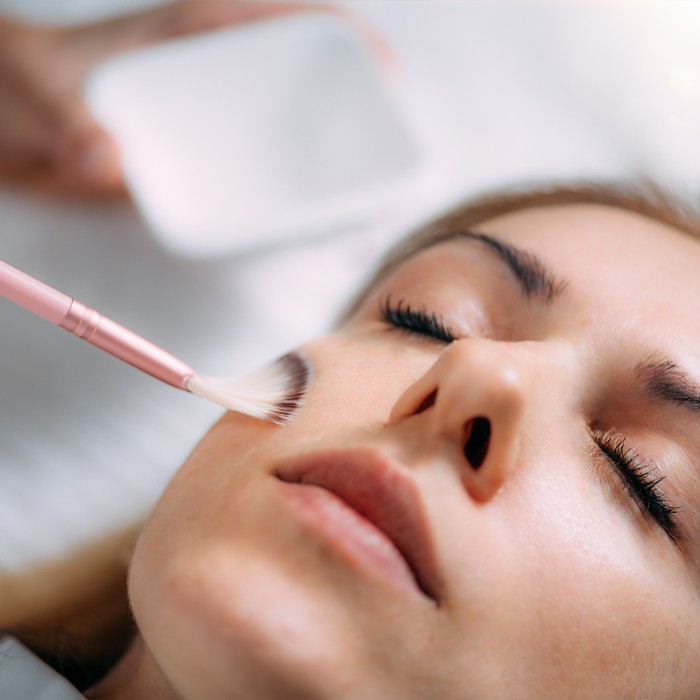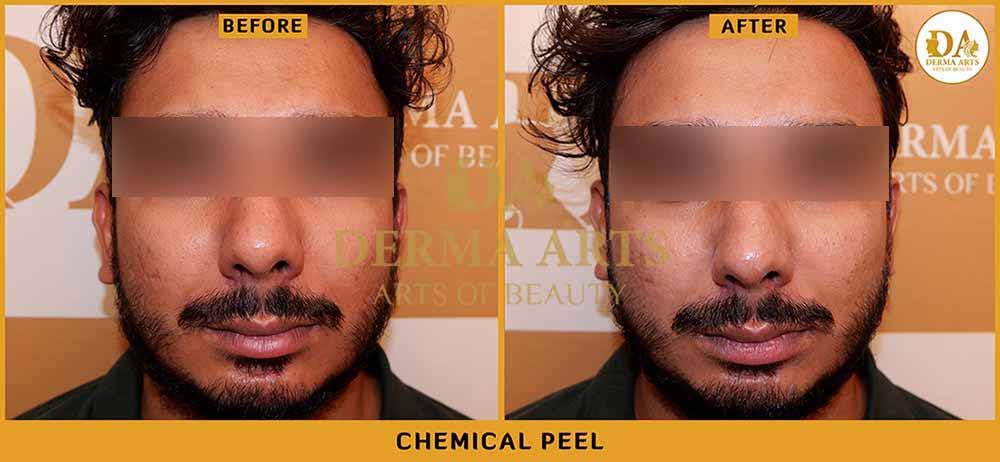Advanced Chemical Peel Treatment in Delhi
Due to ageing, dead skin cells are difficult to shed as they would at a younger age, resulting in dull and tired skin. A Chemical Peel is exactly what you need in such a situation. Several chemical peels are available, and each one can remove the top layer of the skin to improve wrinkles, uneven pigmentation, and sun damage. In addition to creating a youthful appearance, the improvement in texture and colour of the skin contributes to restoring a radiant, healthy, and luminous appearance.
You can get this advanced chemical peel treatment in Delhi.
Chemical Peel for Skin Whitening
An advanced chemical peel treatment on the neck, hands, or face is the most commonly performed cosmetic treatment. The purpose of these products is to make the skin feel smoother and more pleasing. The dermatologist applies a solution to a particular area that exfoliates and peels the skin during this procedure. Once this happens, the skin that comes back becomes healthier, less wrinkled, and smoother.

A chemical face peel for different skin issues can be performed for several reasons:
- Inconsistency or redness of the skin
- Having acne scars
- Scars
- Damage from the sun’ UV Rays
- Melanoma
- Intense hyperpigmentation
Does Skin Chemical Peeling Treatment Work?
TThose with actinic keratoses, sun-damaged skin, and uneven pigmentation are ideal candidates for chemical peel treatment. In addition to sunspots (age spots, solar lentigines, freckles, fine lines), sun damage leads to actinic keratoses, precursors to skin cancer. As well as treating the acne scars, skin peels smoothen wrinkles. When considering skin chemical peeling treatment in Delhi, it is equally important to have realistic expectations and a positive attitude.
Derma Arts Clinic will provide you with the best Chemical peel treatment in Delhi.

Tell Us your requirements
What are different types of Chemical peels?
Chemical peels fall into three categories. Depending on the problem and type of your skin, your dermatologist will recommend the best chemical peel treatment.
1. For deep penetration of the middle layers of the skin, an acid such as trichloroacetic is used. Skin is greatly affected by this type of peel. Deep chemical peels are effective for treating aging spots, freckles, and scarring.
2. An acid such as glycolic acid is used to exfoliate the middle layer of the skin in this type of peel. Skin discoloration, fine lines, age spots, freckles, and wrinkles can be treated with it.
3. Cosmetic procedures such as lunchtime peels are the most common. During a superficial peel, a mild acid makes its way into the skin's top layer. Applied to rough skin and slight discolorations in the skin, it is used for treating them.
Chemical Peel Procedure.
DermaArts offers advanced chemical peel treatment in Delhi. An outpatient procedure might be required for deep peels. You will tie your hair back before starting the chemical peel procedure. After your face is cleansed correctly, you will get eye coverage like goggles or gauze.
You may be given topical anaesthesia by your cosmetic surgeon for the targeted area, especially if you are undergoing a deep chemical peel. A deep peel might be done under a regional anaesthetic that numbs larger areas of the body. Your neck and face will be treated in this way. The heart rate will be closely monitored during deep chemical peels, and an IV will be administered.
Derma Arts perform the best chemical peel for acne, pigmentation, lips, dark circles, dark neck.
Peeling light
During a light peel, chemical solutions such as salicylic acid are applied to the targeted area with brushes, cotton balls, or gauze. Your skin may begin to look white, and you may feel a slight sting. When the dermatologist is finished with the procedure, a neutralising solution is added, or the chemical solution is removed.
Peeling medium
An application of medium chemical peel is performed with a cotton-tipped applicator, a special sponge, or gauze. Depending on the product, trichloroacetic acid or glycolic acid may be present. Blue peels are also known as trichloroacetic acid, which is sometimes coloured blue by dermatologists. Your skin starts lightening, and a dermatologist will give you a cold compress. During the first twenty minutes, you might feel stinging or burning. A blue peel causes the skin to appear blue for at least several days after the procedure.
Peeling deep
A sedative will be administered during this procedure. For applying phenol to your skin, the surgeon would use a cotton-tipped applicator. Grey or white skin will result from this. We will perform the procedure in 15-minute segments to limit the amount of acid that reaches the skin.
What to expect before, during, and after a chemical peel treatment?
Before the Treatment
- Seek the advice of your dermatologist before getting a chemical peel. Medications like isotretinoin for acne, frequent cold sores, or abnormal skin pigmentation might not be recommended for this treatment.
- If you have fair skin, chemical peels are more effective. The procedure is likely to lead to an uneven skin tone in people with dark skin.
- Avoid massages, waxing, bleaching, and scrubbing one week before the treatment, and stop using retinoids or retinol 48 hours before the treatment.
Get the best chemical peel treatment at Derma Arts.
As the treatment progresses
- You begin by having your face cleaned and your hair and eyes covered by the dermatologist.
- You may need a sedative for medium peel treatments. To perform a deep chemical peel procedure, local anaesthesia will be used. For a light peel, there is no need for painkillers.
- The target area is rubbed with a peeling solution for a specific period, and then a neutralising solution is applied.
- Five to ten minutes after the procedure, you might experience a burning sensation. The dermatologist prescribes pain medications as well as ice compresses as pain relief.
In the aftermath of treatment
- If you have recently undergone chemical peel treatment, you can expect sun damage to your skin. During the summer months, broad-spectrum sunscreens with SPF 40 or higher are essential. When the sun's rays are at their strongest, limit your sun exposure.
- The skin may feel red or scaley seven to ten days after the procedure.
The chemical peel treatment will be explained to you by your dermatologist before you receive it. You should let your dermatologist know if you take any medicines.
Chemical Peel Before & After

